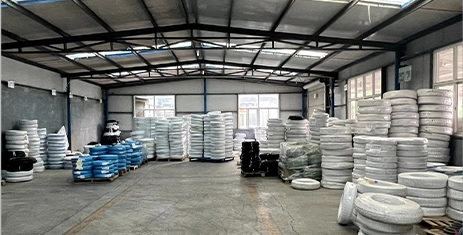power steering fluid pressure hose
Understanding Power Steering Fluid Pressure Hoses
Power steering is an essential system in modern vehicles that enhances maneuverability and ease of steering, especially at low speeds. A crucial component of this system is the power steering fluid pressure hose, which plays a pivotal role in ensuring optimal performance. This article delves into the importance of power steering fluid pressure hoses, their functioning, maintenance, and common issues that may arise.
What is a Power Steering Fluid Pressure Hose?
Power steering fluid pressure hoses are specifically designed tubes that transport hydraulic fluid from the power steering pump to the steering gear or rack. These hoses need to withstand high pressure while being flexible enough to accommodate the movements and vibrations of the engine and steering system. Typically made from high-quality rubber and reinforced with materials like steel, power steering hoses are built to last, albeit they are subject to wear and tear over time.
How Does It Work?
When you turn the steering wheel, the power steering pump engages and sends pressurized hydraulic fluid through the pressure hose to the steering gear. This fluid provides the necessary force to assist in turning the wheels. The steering rack then converts the hydraulic energy into mechanical movement, reducing the amount of effort needed to steer the vehicle.
In addition to the pressure hose, there is usually a return hose that carries the fluid back to the power steering pump after it has completed its work. This constant circulation of fluid is crucial for maintaining consistent steering responsiveness and comfort while driving.
Importance of Maintenance
Maintaining the power steering fluid pressure hose is vital for the overall health of the power steering system. Regular inspections can prevent potential failures that could lead to a loss of steering assistance or even complete failure of the system. Here are some essential maintenance tips
1. Check for Leaks Regularly inspect the hoses for any signs of leaks, cracks, or bulges. Even a small leak can lead to a gradual loss of fluid, which may eventually cause damage to the pump or steering gear.
2. Ensure Proper Fluid Levels Make it a habit to check the power steering fluid reservoir and top it off if necessary. Low fluid levels can lead to air entering the system, causing erratic steering and noise.
power steering fluid pressure hose

3. Monitor Performance Pay attention to any changes in steering feel. A sudden increase in stiffness or difficulty in steering may indicate a problem with the pressure hose or other components of the power steering system.
4. Replace When Necessary If you notice any signs of wear or damage, it’s best to replace the power steering fluid pressure hose as soon as possible. Delaying repairs can lead to more severe issues and potentially costly repairs.
Common Problems and Symptoms
There are several common issues related to power steering fluid pressure hoses that drivers should be aware of
- Leaks As previously mentioned, one of the most common issues is leaks, which can lead to low fluid levels and reduced power assist.
- Kinking or Blockage If the hose is kinked or blocked, it can restrict the flow of fluid, causing insufficient power assist. This can make steering difficult and might result in damage to the pump.
- Worn-out Fittings Sometimes, the fittings where the hose connects can become corroded or damaged, leading to leaks or a poor connection.
- Noise Unusual noises such as whining or squealing while turning may indicate problems within the power steering system, possibly related to the pressure hose or the pump itself.
Conclusion
The power steering fluid pressure hose is a critical component of a vehicle's steering system, ensuring that the driver can maneuver the vehicle with ease. Regular maintenance, including inspections for leaks and general wear, is essential for prolonging the life of the hose and ensuring optimal performance of the power steering system. By recognizing the signs of potential issues early and acting promptly, drivers can avoid more severe complications and maintain a smooth and safe driving experience. Remember, taking care of your power steering components not only enhances steering comfort but also contributes to overall vehicle safety.
-
Ultimate Spiral Protection for Hoses & CablesNewsJun.26,2025
-
The Ultimate Quick-Connect Solutions for Every NeedNewsJun.26,2025
-
SAE J1401 Brake Hose: Reliable Choice for Safe BrakingNewsJun.26,2025
-
Reliable J2064 A/C Hoses for Real-World Cooling NeedsNewsJun.26,2025
-
Heavy-Duty Sewer Jetting Hoses Built to LastNewsJun.26,2025
-
Fix Power Steering Tube Leaks Fast – Durable & Affordable SolutionNewsJun.26,2025

